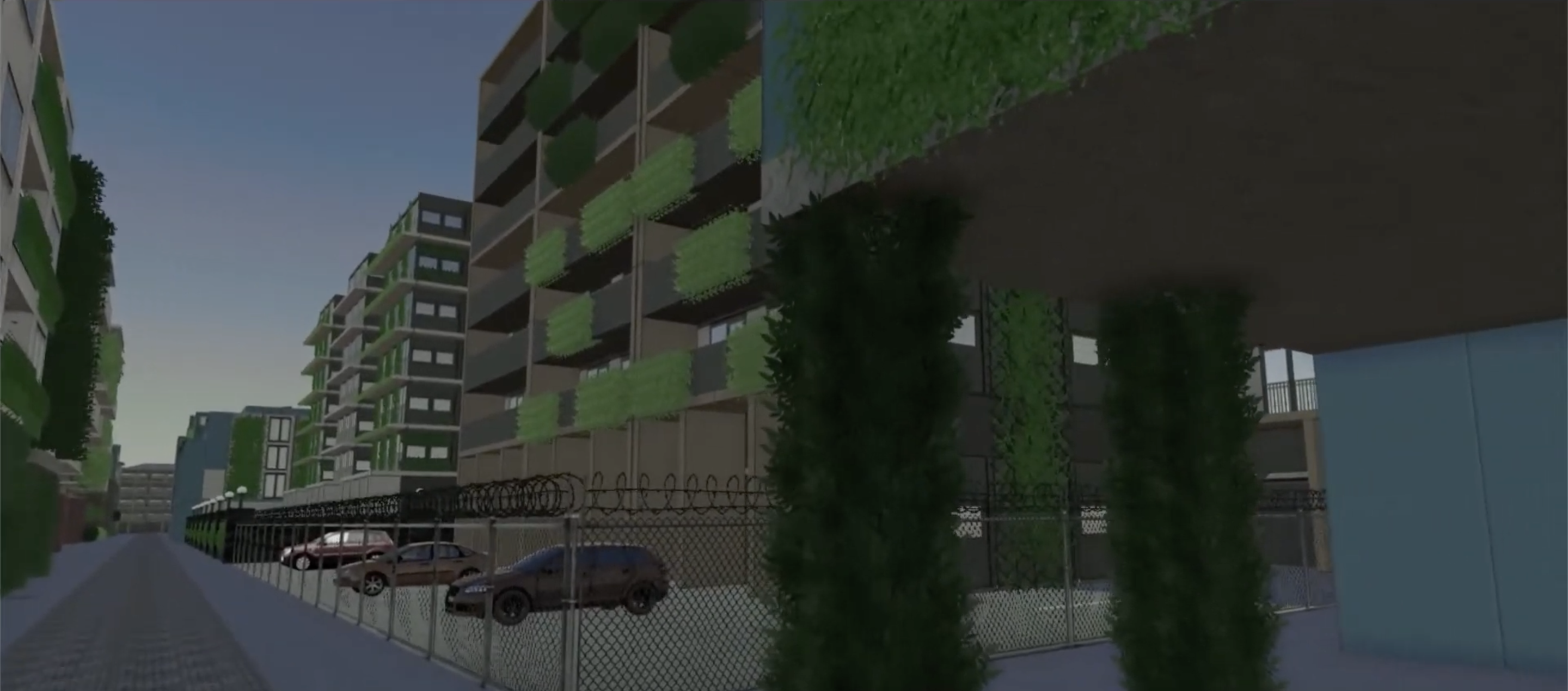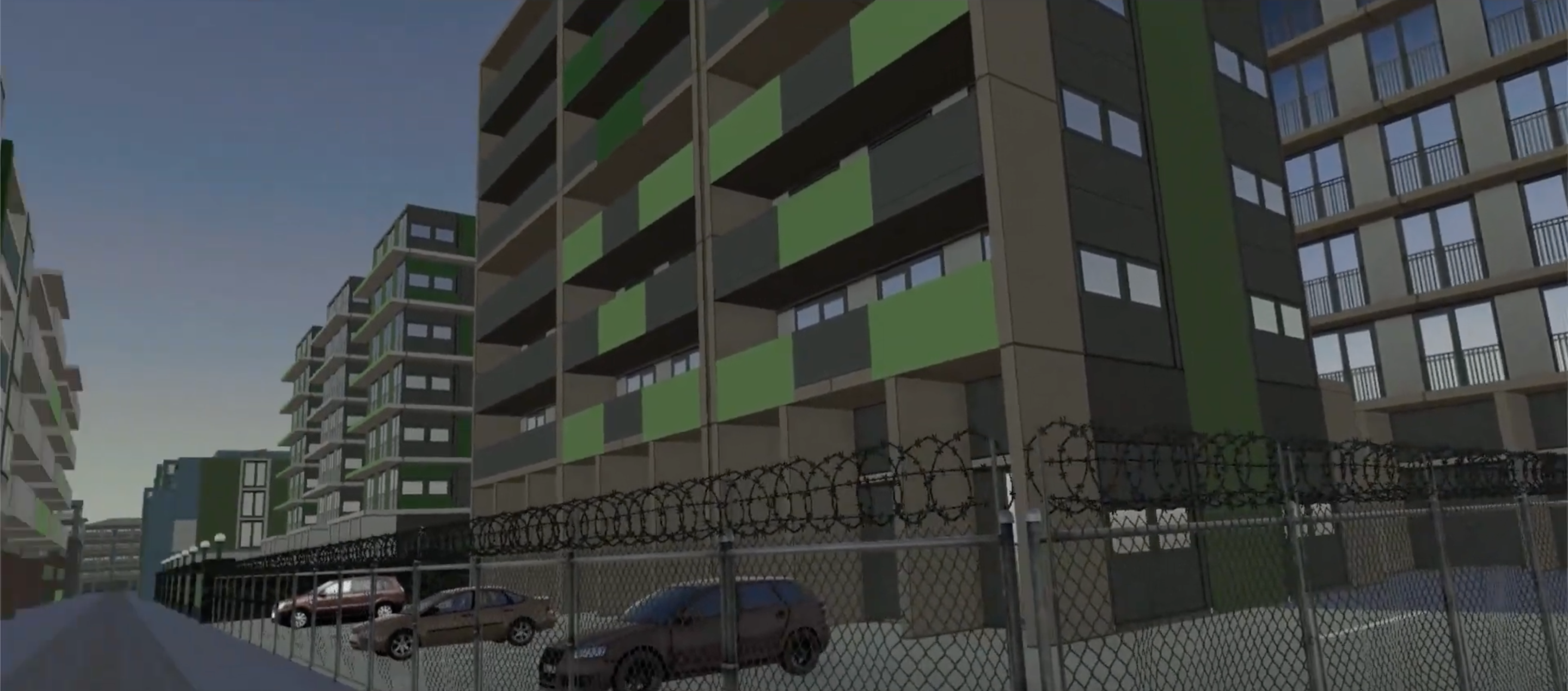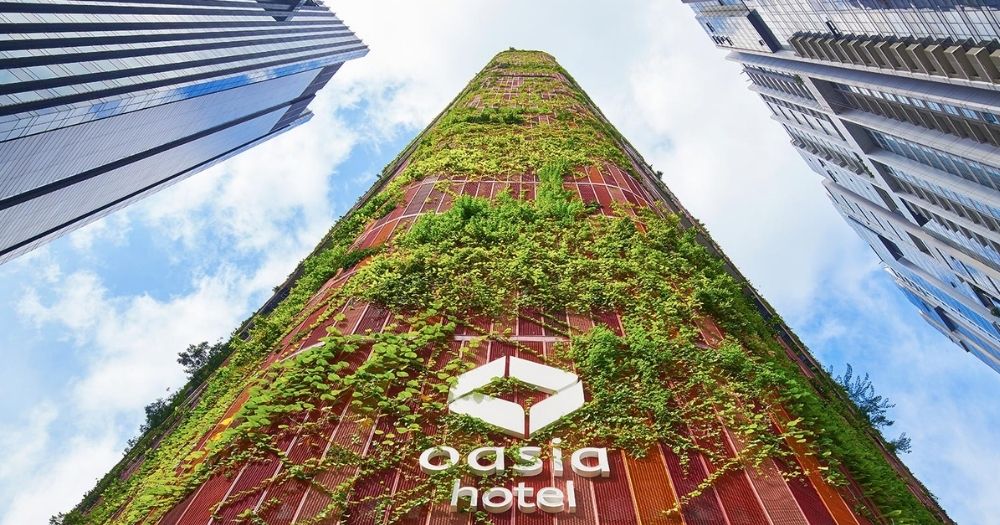Follow us on Telegram for the latest updates: https://t.me/mothershipsg
A study by Singapore's Nanyang Technological University (NTU) has found that vertical greenery "planted" on the exterior of buildings may help as a buffer against stress.
No change in stress from vertical greenery
The study engaged 111 participants who wore Virtual Reality (VR) headsets to walk down a randomly assigned virtual street for five minutes.
The virtual street either featured buildings with rows of planted greenery (e.g., on balconies, walls, and pillars of buildings) on buildings, or buildings with green painted walls in place of the green plants.
 Buildings with vertical greenery planted. Screenshot image courtesy of NTU Singapore.
Buildings with vertical greenery planted. Screenshot image courtesy of NTU Singapore.
 Buildings with walls painted green. Screenshot image courtesy of NTU Singapore.
Buildings with walls painted green. Screenshot image courtesy of NTU Singapore.
Developed by the NTU research team, the virtual environments played heavy traffic noise as participants travelled through the virtual street to match a real-world experience.
Based on the measure of heart rate variability – a physiological indicator of stress – the study found that participants who viewed buildings with planted greenery did not experience any change in stress.
However, using the same measure, participants who viewed buildings with green paint experienced a significant increase in stress.
After the experiment, participants answered a questionnaire that assessed their positive (e.g., interested, excited) and negative emotions (e.g., upset, hostile), and the level of anxiety they were feeling.
Similarly, participants who walked through buildings with planted greenery did not report a change in positive feeling, whereas participants who walked through buildings with green walls reported feeling less positive.
The relationship between vertical greenery and mental health
The NTU study is one of the first to explore the contribution of vertical greenery to mental health.
The findings have implications for the well-being of people living in urban areas and can guide greening efforts in cities, say the researchers.
Vertical greenery is often planted for sustainability benefits, where walls of greenery can help lower ambient temperature, which reduces energy consumption from cooling systems.
In addition, they can also reduce carbon emissions and lessen the effect of ‘urban heat island’ – a phenomenon where city centres experience much warmer temperatures than less populated areas because of limited greenery and a high concentration of built structures.
However, principal investigator of the study and Associate Professor from NTU School of Social Sciences Psychology Programme, Lin Qiu explained that their work can guide efforts to green cities, by "providing evidence of how vertical greenery can be a viable way to integrate nature into our built environment and promote mental health".
The NTU research team plans to use VR to investigate the psychological impact of using nature in architecture, for instance, using natural materials like wood compared to concrete, in future.
Top image from Oasia Hotel website and for illustration purposes only
If you like what you read, follow us on Facebook, Instagram, Twitter and Telegram to get the latest updates.

